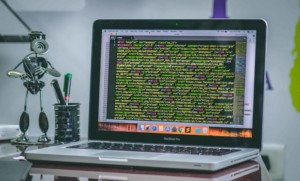Next Gen Science Standards 101

The Institute for Science and Math Education at the University of Washington recently offered a crash course on the Next Generation Science Standards. Director of the Institute Philip Bell and a panel of STEM education experts provided a helpful orientation well worth 75 minutes of your time – the presentation should be available on the Institute’s website soon. In the mean time, don’t forget to check out the resources at the end of this post.
The Next Generation Science Standards are based on the Framework for K-12 Science Education, but Bell emphasized that the two documents should be used together. Mark Windschitl noted that the NGSS emphasize teaching STEM in the context of practices, especially modeling and explanation.
Schools & the NGSS
Dan Gallagher, Program Manager for Mathematics and Science for Seattle School District, discussed implementation of the NGSS in Washington State, noting that any materials developed for NGSS needs to help schools achieve their goals and obligations. The major challenge for many school districts will be a lack of funding to purchase materials and training that support the NGSS. Dan suggests making use of under-utilized resources to bridge the gap – from local teachers with years of experience in the classroom to local universities and scientists. Bell noted that informal learning environments such as museums, zoos, and aquariums have the ability to adapt their educational offerings much more quickly than most school districts, and are thus important partners for STEM education.
Access, Inclusion, and STEM Education
Megan Bang addressed the need to improve access to high quality instruction for all students. She noted that the NGSS expand the consideration of culture as it relates to science, technology, engineering, and math – it moves away from what Megan described as the “box model” (putting people in boxes based on demographics) and towards understanding that science is dependent on cultural contexts and multi-faceted communities. New learning is connected to preexisting knowledge, and that knowledge includes cultural backgrounds. Megan offered the Alaskan Native Knowledge Network as an example of well-developed inclusive science instruction, noting that there currently isn’t a clearinghouse of culturally inclusive STEM education resources. Both teachers and students bring with them deep cultural knowledge, added Carrie Tzou. Don’t just acknowledge it, use it. Additionally, both teachers and students need to be able to see themselves as competent science learners. Reflective inquiry projects can help both teachers and students connect their cultures to STEM learning.
STEM Education for Young Children
Andrew Shousse discussed engaging young children with STEM, emphasizing that developmental psychology no longer insists that young children require simple, concrete STEM instruction. Kids are competent as young as four months old, building concepts of physical and psychological properties. It takes work to get kids predict, test, and retest ideas about STEM but it is worth the effort.
Resources
The following resources were recommended by the Institute for Science and Math Education:
- Watch a 3-minute video or an hour-long webinar about the vision for K-12 science education
- Download the new consensus framework for K-12 STEM education from the National Academy of Sciences
- Download the Next Gen Science Standards and check out the resources available at nextgenscience.org
- Find a range of resources developed by National Science Teachers Association here
- And don’t forget to check out the resources available from the Institute for Science + Match Education






0 Comments
Leave a Comment
Your email address will not be published. All fields are required.